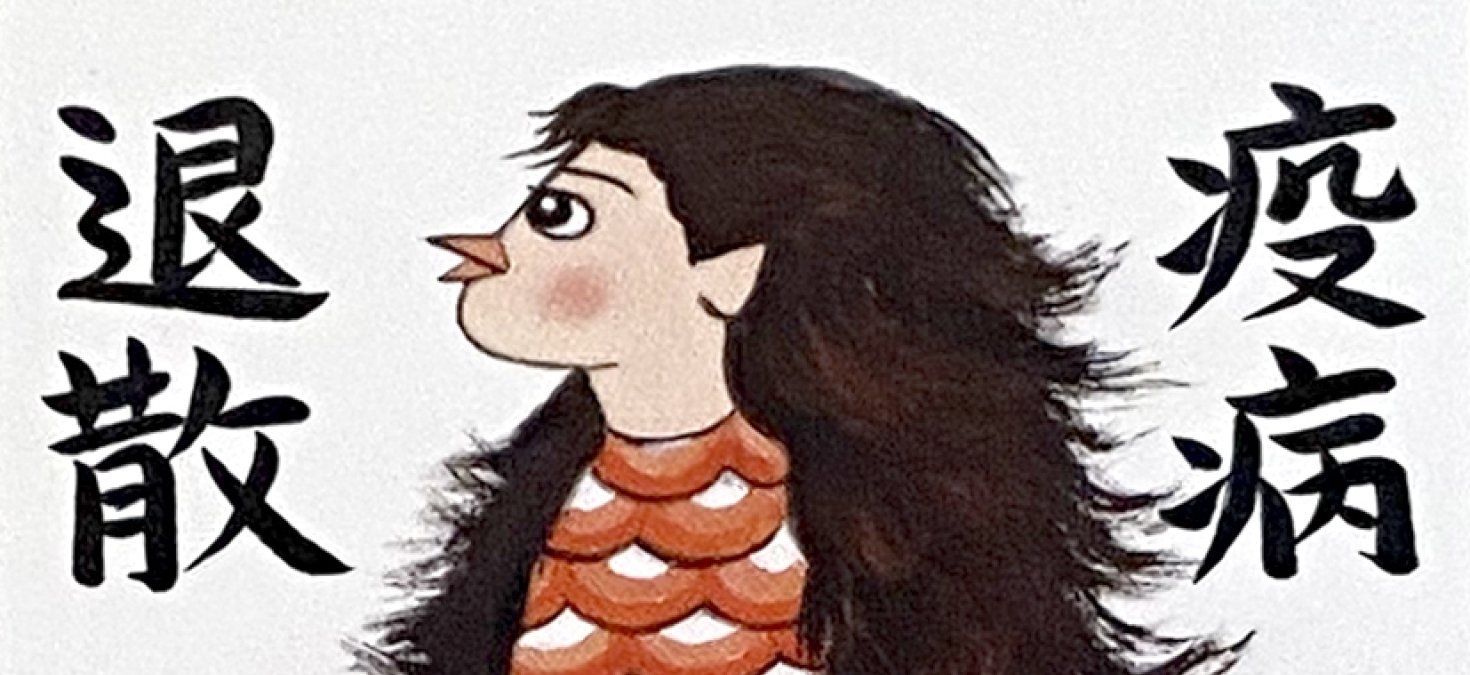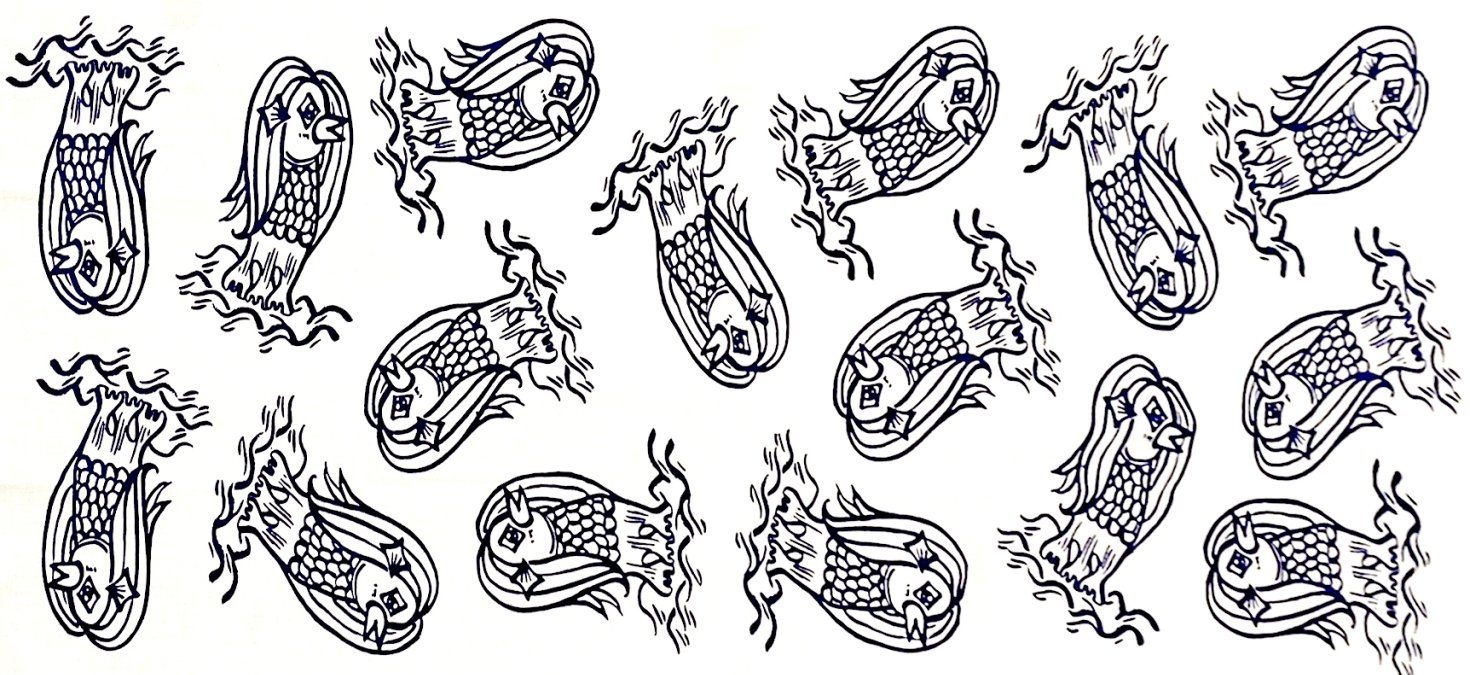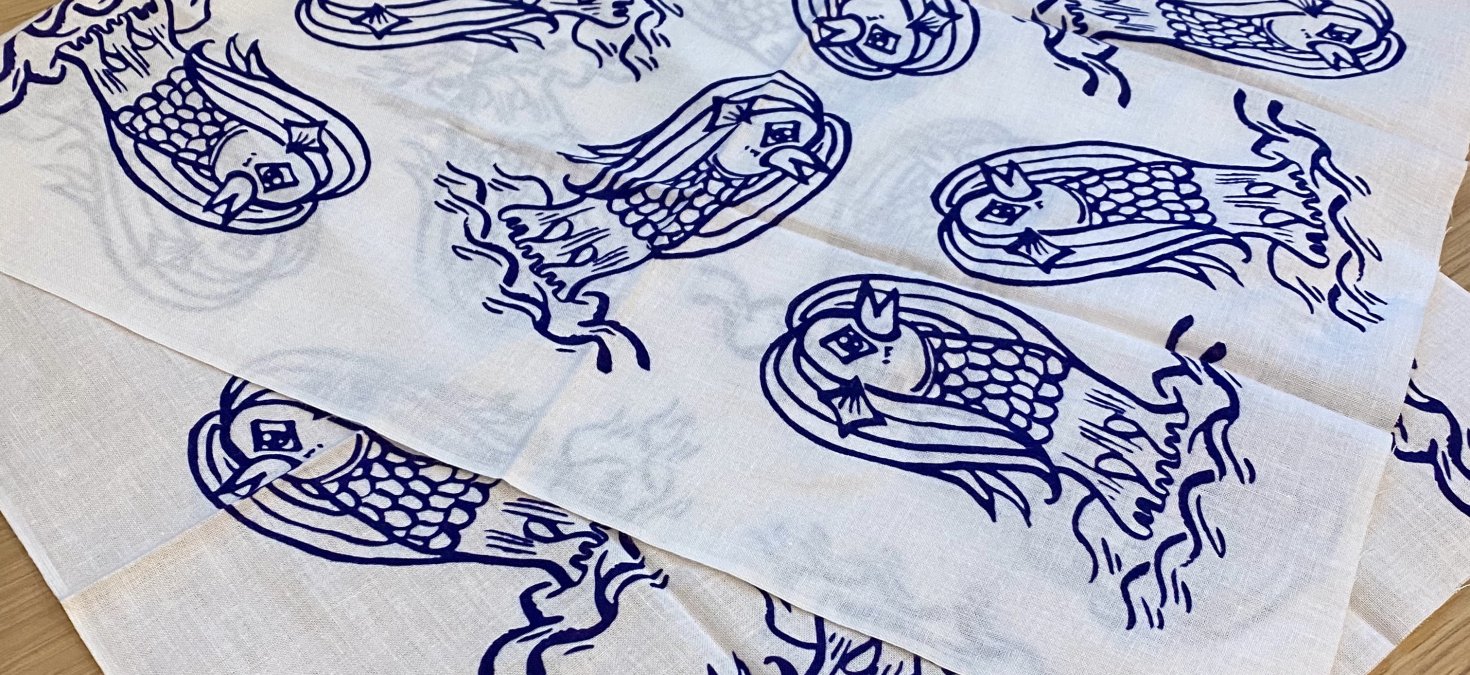Yōkai and Amabie

By Trevor Graham, UIUC Junior in East Asian Languages and Culture
Amabie illustration (above) by Zenkyu Niwa
Yōkai (妖怪) are creatures and phenomena of Japanese folklore including spirits, monsters, and just about all things supernatural. The word is derived from the kanji 妖 (yō in this context) meaning attractive, bewitching, or calamity, and 怪 (kai in this context) meaning mystery or wonder. There is much debate as to what constitutes Yōkai in Japanese tradition, as it is a broad and vague term with no real English translation, but most creatures and phenomena in the supernatural realm constitute yōkai in Japanese folklore. This includes ghosts, deities, demons, transformed animal spirits, spirit possession (think Tale of Genji), and just general strange phenomena. Some yōkai even supernaturally appear to forewarn of doom or impending events. The yōkai Amabie (アマビエ) is one example of such a creature.

During the COVID-19 pandemic, artistic creations depicting Amabie have become popularly posted across social media because of its symbolic supernatural appearance forewarning of epidemics or of abundant harvests. According to Japanese legend, Amabie arises from the sea as a kind of three-legged mermaid creature to predict that a disease is coming, unless people make copies or drawings portraying the creature. During the Edo Period, many woodblock prints were created depicting Amabie, as it became common practice to make artistic iterations of the creature, as the creature itself supposedly instructed, in order to ward off disease. During the coronavirus pandemic, the yōkai became an internet sensation as many artists on social media created their own drawings of the creature recalling this creature’s instruction. Did the pandemic become widespread because we neglected Amabie’s forewarning? Perhaps we will never know. But, making stuffed animals and drawings of the creature has become popular this past year to playfully remind all of this warning to take disease seriously. However, as some old woodblock prints of Amabie might demonstrate, modern depictions of the creature are much less scary and much more comforting!
As this belief in all these supernatural creatures and phenomena might suggest, Japanese culture can be quite superstitious. Japanese people trust in these yōkai to predict, cause, or even prevent certain disasters or events. Japanese people are very superstitious in living a certain way in order to avoid disastrous events. For example, the phrase 畳のへり踏んではいけない (tatami no heri funde wa ikenai) means “do not step on the border of a tatami mat” as it will bring bad luck, which is very similar to the old English superstition of not stepping on a crack (or you will break your mother’s back). Similarly, certain numbers are considered unlucky and avoided in Japanese, sometimes being skipped on airplanes, in hospitals, and in products being released, as 4 is sometimes pronounced “shi,” which can also mean “death.” Perhaps Japanese obsession with yōkai stems from a certain Japanese disposition to act or not act in certain ways to avoid misfortune. Amabie presents a brilliant example of a superstitious action taken in order to make sure fortune in the form of plentiful harvest, not misfortune in the form of plague, is brought to all.
What further brought Japan to Yōkai was their strange qualities that explained phenomena that were simply unexplainable at their time. For example, the desire to explain disease as being caused by the supernatural is often associated with the prophetization of Amabie, representing the desire to explain, at the time, disease. Additionally, Amabie offered an explanation to why times could be both flourishing and brutal, as it usually predicted disease to follow bountiful harvests. Like many yōkai of Japanese folklore, not much is known about the origin of Amabie, but it is believed that there was a desire to have charms to ward off against diseases like cholera that ravaged the Japanese population. Amabie charms are still sold in shrines around Japan containing this purpose of warding off diseases. Japanese people understood that the good times did not last forever and looked to the supernatural and yōkai to attempt to explain why such times could be overtaken by misfortune. However, they also looked to yōkai in an attempt to prevent this unpreventable misfortune as well. Thus, drawing Amabie has become an example of Japan’s interest in yōkai as a means to control uncontrollable problems such as disease. Maybe drawing Amabie during the pandemic will allow us to ward off similar pandemics for centuries to come. Personally, I could not hope more for this to be the case!

A tenugui with Amabie print